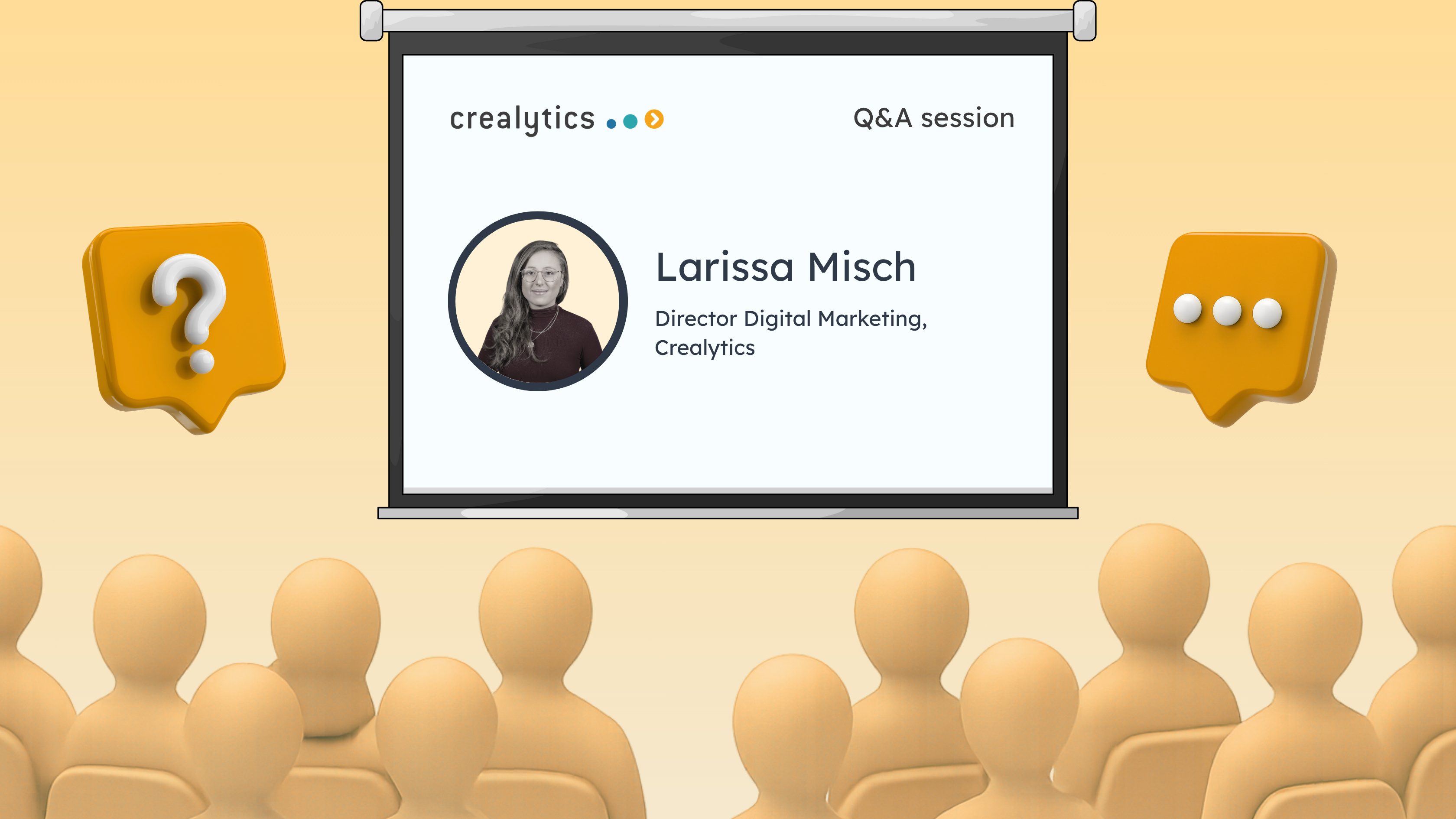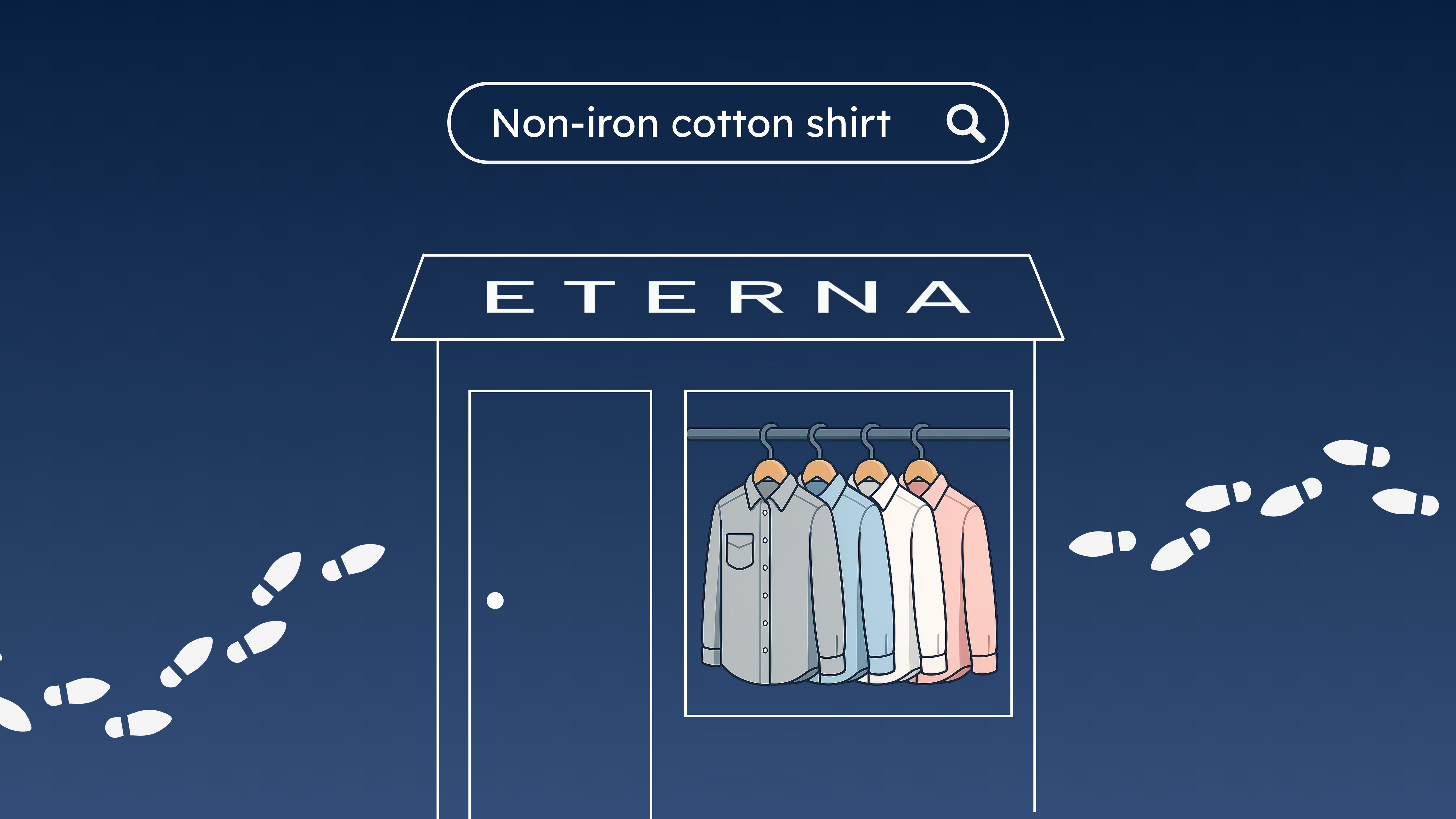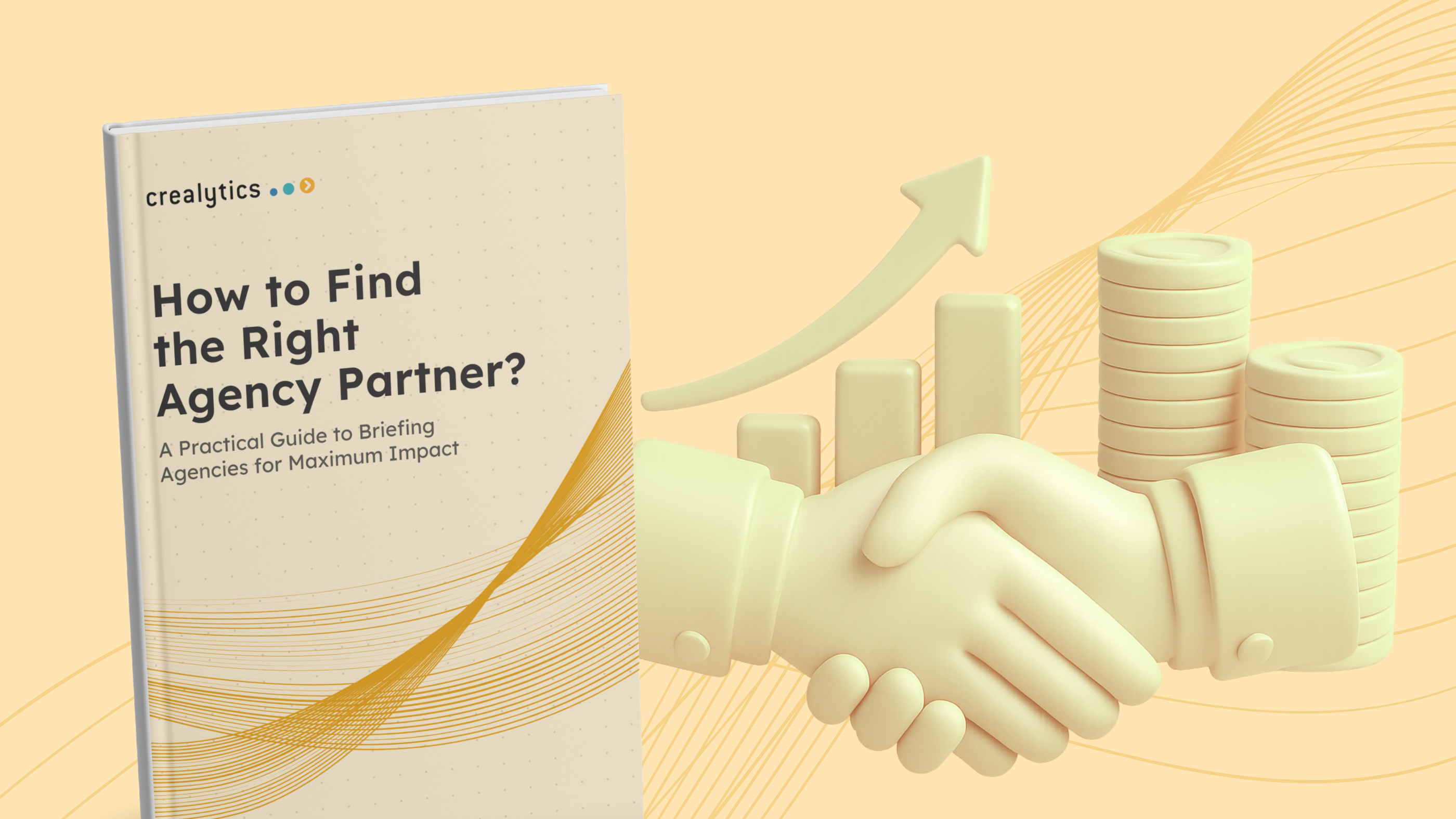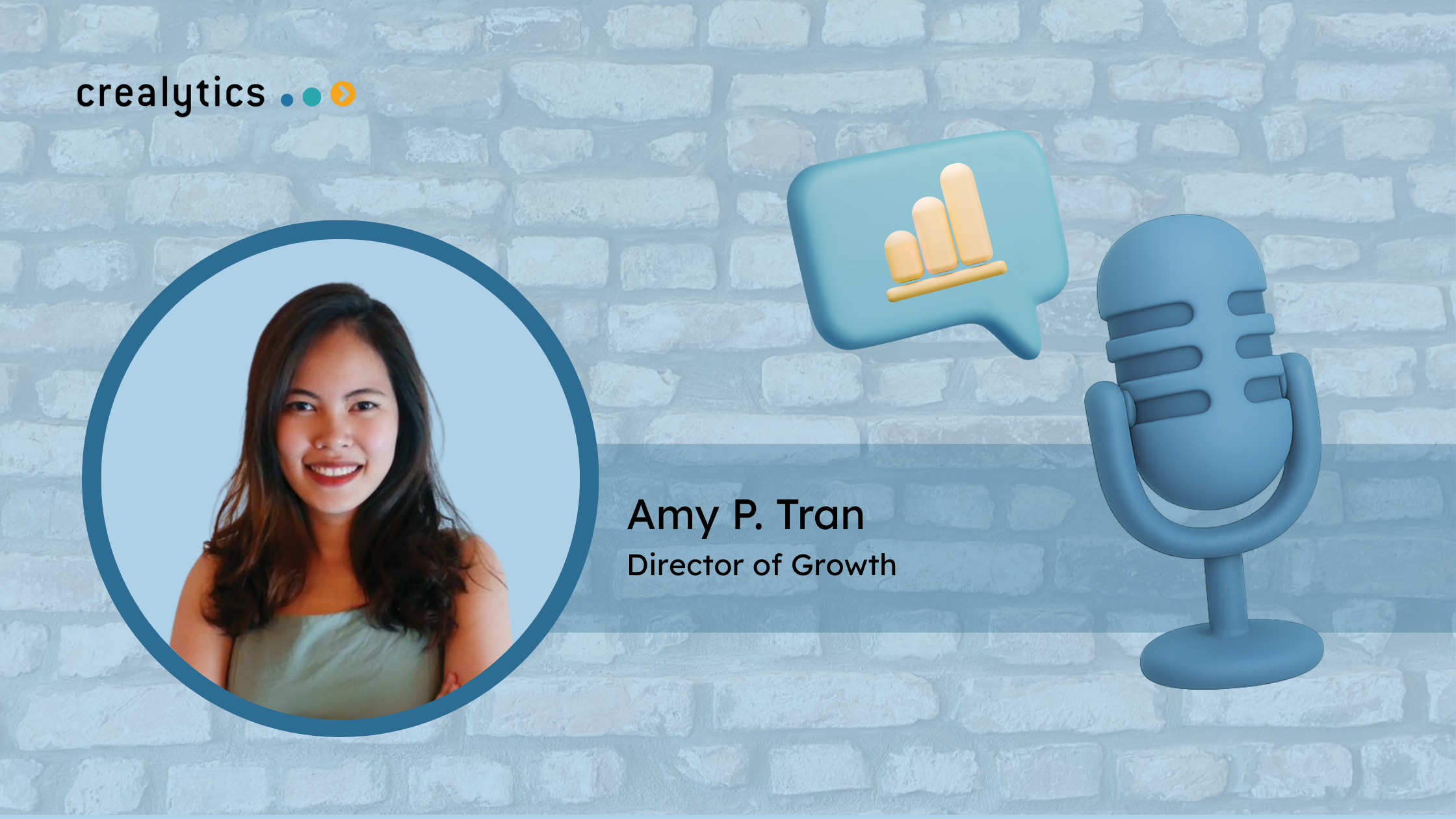How Meme Content Drives Sales: A Guide for Modern DTC Brands
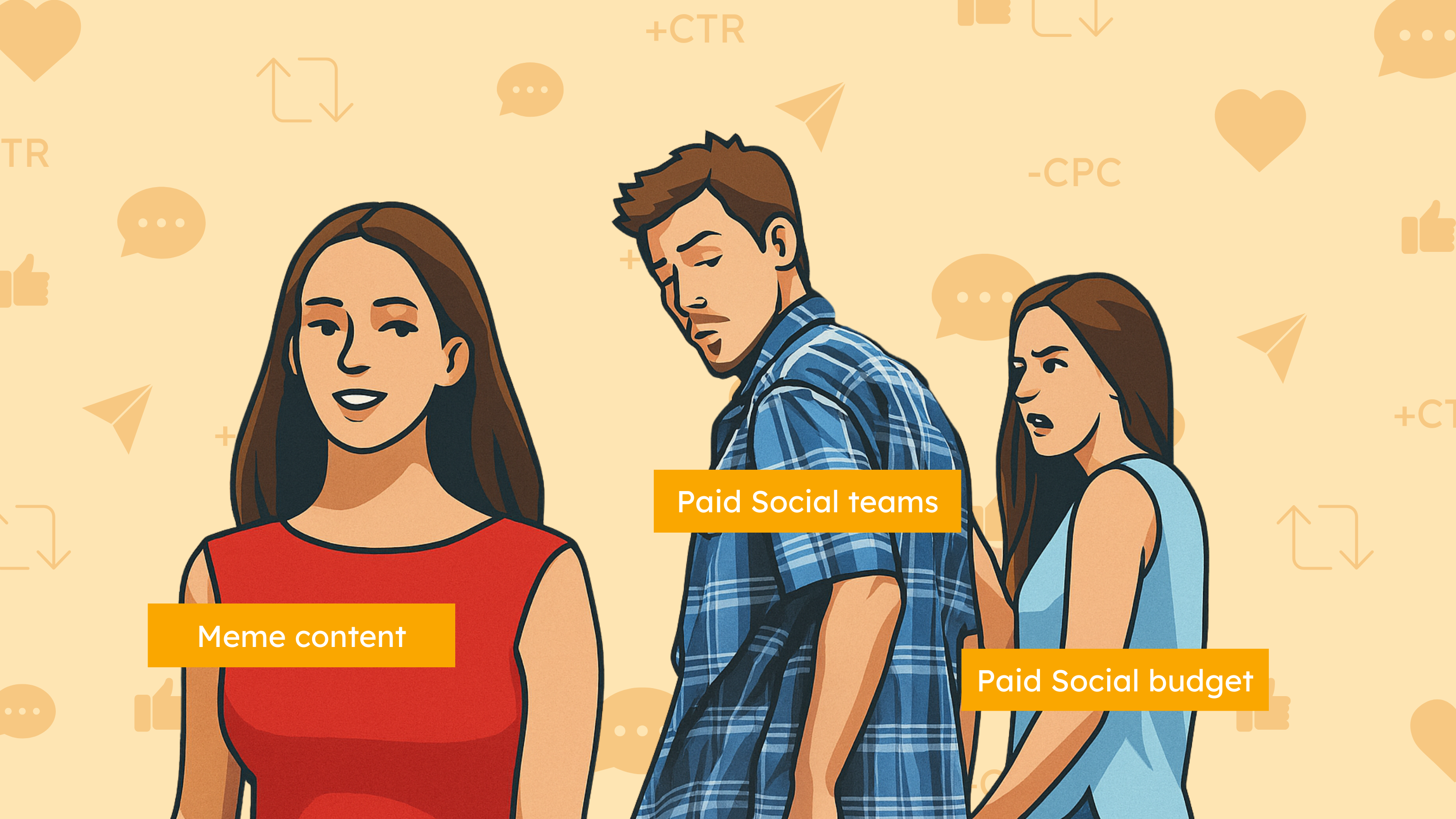
A meme page with zero budget just got 1.2 million likes on a post it made in 30 seconds. Meanwhile, a Fortune 500 brand spent three weeks crafting a campaign that flopped.
While most brands focus on polished campaigns, meme-style content often wins on reach, engagement, and click-through rates. According to Forbes, 60% of consumers are more likely to purchase from a brand that uses memes in its marketing.
Meme-driven content represents both a cultural shift and a measurable marketing channel. While brands don't need to completely pivot to meme-style content, understanding its mechanics can help improve performance across the marketing funnel.
Why Meme Marketing Works for DTC Brands
Direct-to-consumer brands operate in one of the most competitive digital environments. Standing out in saturated feeds requires more than polished creative. This is exactly where meme-style content can deliver.
Campaigns that use meme content consistently outperform traditional creative in engagement, CTR, and conversions. According to EMarketer, 41%of US consumers want brands to participate in meme culture and social media trends.
Memes are also uniquely suited to how DTC audiences (particularly Gen Z and Millennials) consume content. A YPulse survey shows that 75% of people aged 13 to 36 share memes, with 30% doing so daily. Instead of typing out thoughts or feelings, they send a meme that captures the mood - whether it’s sarcasm, frustration, excitement, or irony. It’s how they react to news, comment on culture, or connect with friends. When brands speak in that language, they increase the chance of relevance, interaction, and engagement.
How to Leverage Memes for Full-Funnel Growth
Memes are not just for top-of-funnel visibility. When used strategically, they can support every stage of the customer journey, from awareness to conversion to retention. Here are six practical ways to apply meme-style content across your marketing funnel.
1. Top-of-Funnel Awareness: Use Memes to Increase Reach and Visibility
Memes offer a low-cost, high-impact way to generate top-of-funnel visibility. Their natural virality drives organic sharing and scale. According to Instagram, users share over 1 million memes daily. This signals not just cultural relevance but a real opportunity for organic reach at scale.
When Netflix launched Bird Box, it didn’t rely solely on trailers or paid promotion. Instead, it released still images from the show designed to intrigue audiences and encourage engagement. The internet responded with a flood of memes, remixing the visuals into absurd, relatable, and hyper-contextual content. Despite receiving mixed critical reviews, Bird Box became a viral hit, garnering 45 million views in its first seven days.
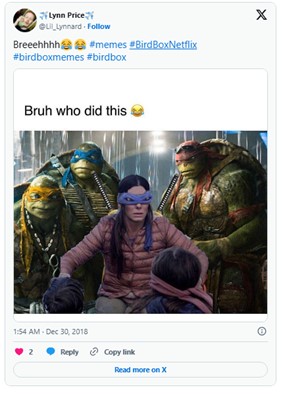
Relevant article: Brand Marketing in 2025: 8 Power Moves Every Marketer Must Master
2. Paid Social Ads: Boost CTR with Meme-Inspired Creatives
Meme-style visuals (lo-fi images, reaction tweets, screenshot aesthetics) are built for platforms like Meta, TikTok, and Instagram. These formats reduce ad fatigue and improve click-through rates by blending into the user’s feed. According to MediaPost, using memes in social media ads generates a 30% engagement rate, far above the rates of 1%-15% seen for influencer or branded content posts.
Reddit tested this approach when promoting its advertising solutions to marketers. To overcome the challenge of explaining its unique, community-driven model, Reddit developed original meme-style ads tailored to Facebook and LinkedIn. The result: a 50% increase in CTR, proving that culturally fluent, low-barrier creative can drive performance when executed with intent.
Performance teams can use these formats for prospecting ads, engagement campaigns, and even product launches. The key is not to mimic what’s trending, but to apply the structure and emotional triggers that make meme content effective.
3. Brand Personality: Use Memes to Humanize Your Brand
Memes give brands a relatable voice and have become a form of digital language. They tap into shared frustrations or humor, making companies feel more human. Memes rely on familiar formats and emotional shorthand, which is why they feel so immediate and relatable. Tapping into that instinct helps brands build affinity, especially in mid-funnel engagement.
Ryanair exemplifies, by regularly posting self-deprecating, meme-driven content that reflects real travel pain points. This tone resonates with Gen Z because it sounds like how they speak not how brands market.
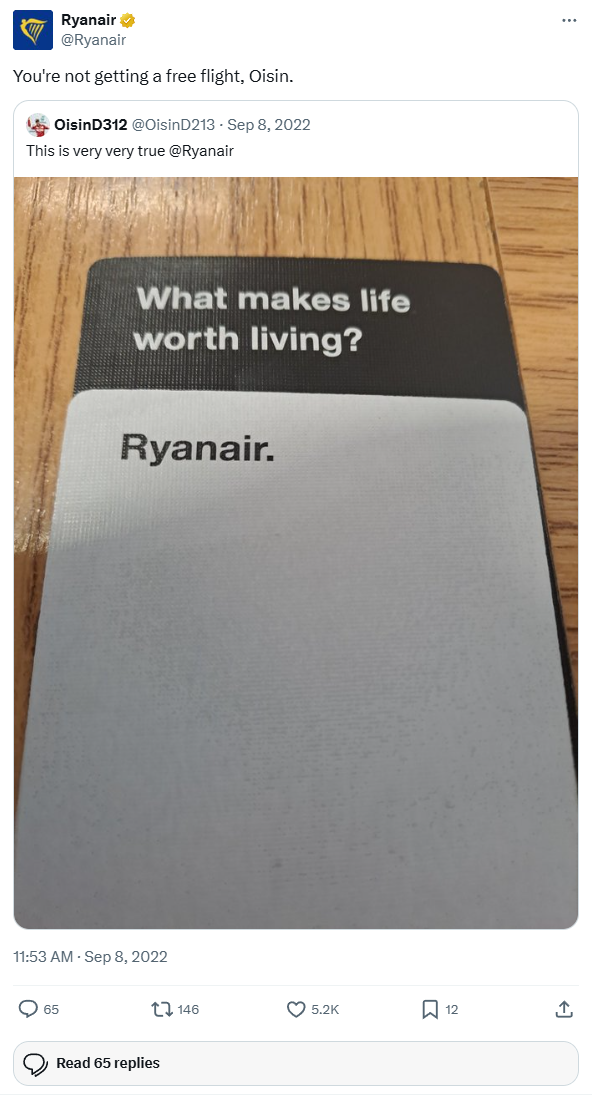
4. Real-Time Relevance: Create and Share Memes Fast
Meme performance is closely tied to timing. A 2023 study titled Competition Dynamics inthe Meme Ecosystem by Trenton W. Ford, Rachel Krohn, and Tim Weninger found that, as content volume increases, meme lifespans are shrinking. With more memes competing for visibility, only those published early in the cycle tend to gain traction.
For brands, this makes speed a competitive advantage. Rigid approval processes and long creative timelines often mean missing the cultural window entirely. One of the most referenced examples is Oreo. Within minutes of the lights going out, the brand pushed out a simple graphic. It earned over 15,000 retweets in a matter of hours, not because it was beautifully designed, but because it was fast, timely, and relevant.
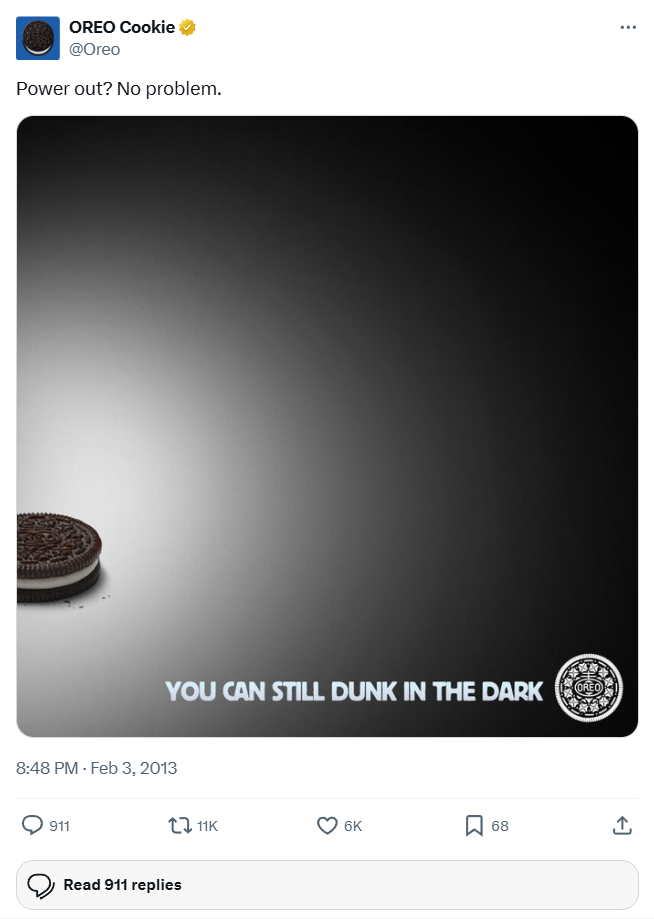
5. Content Repurposing: Extend Meme Performance Across Channels
Strong memes don’t need to be one-and-done. A high-performing meme can be adapted across the funnel to extend impact and reinforce messaging. For example, a meme that performs well on Instagram can be reused in retargeting ads, email carousels, influencer scripts, or landing pages, saving production time and maintaining cultural relevance across touchpoints.
A 2022 study titled Meme Marketing: How Can Marketers Drive Better Engagement Using Viral Memes? by Suresh Malodia et al. found that viral memes can deliver meaningful brand outcomes, including increased awareness, recall, and engagement. Additionally, another study titled The impact of humor on memory: Is the humor effect about humor? by Kieth A. Carlson shows that humor-based, visual content is more likely to be remembered than neutral or overly polished messaging. By reinforcing a high-performing meme across formats, brands can improve recall and message lift without saturating thecreative.
By treating memes as reusable creative assets, brands can improve consistency, efficiency, and message lift, without constantly creating new content. The key is adapting for format and channel while keeping the emotional trigger that made the meme resonate.
6. Fit the Format to the Brand: Custom Meme Strategies by Category
Meme marketing works best when it aligns with your brand’s identity, tone, and audience. What’s effective for a fast-paced consumer brand may feel off-brand for a luxury label. The format alone doesn’t guarantee success: execution and brand fit are key.
According to the Journal of Interactive Marketing, the article Internet Meme Marketing over the Fad Cycle warns that inauthentic or excessive meme use can hurt brand perception. Tone-deaf memes can make brands seem out of touch. To use memes effectively, marketers need to understand their audience’s humor, references, and expectations, and ensure the content reflects the brand’s voice.
Gucci’s #TFWGuccicampaign offers a luxury example done right. For its 2017 watch collection, Gucci collaborated with meme creators to develop original content that felt witty but still maintained its distinct aesthetic. The campaign reached 120 million people, with 2 million likes and 21,000 comments.
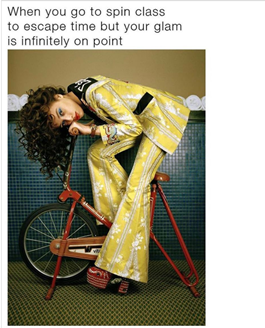
There is no universal playbook for meme marketing. What works for one brand can fall flat for another. The key is to know your audience and lean into what feels right for your category. Luxury brands may require bespoke creative control, while mass-market brands can thrive by leaning into internet chaos and speed.
Conclusion: Memes as a Growth Marketing Strategy
Meme marketing has become a powerful way to break through the noise, capture attention, and drive results across the funnel. When approached with the right mix of timing, cultural relevance, and brand alignment, memes can support full-funnel growth and outperform traditional creative on key performance metrics.
Successful brands treat meme marketing as part of a larger strategy. They study their audience, move fast, experiment with formats, and find ways to turn cultural relevance into measurable growth.
---
Not sure how to integrate memes into your content strategy? Reach out to us!
Relevant insights
· Case study: Auditing Social Media Presence of a Global Fashion Brand with over $4 Billion Revenue
· Article: Personalization in Marketing with GenAI: Data-Driven Strategies for Better Engagement
· Article: Why Branding Is Key to Marketing Success in 2025 and Beyond
About Crealytics
Crealytics is an award-winning full-funnel digital marketing agency fueling the profitable growth of over 100 well-known B2C and B2B businesses, including ASOS, The Hut Group, Staples and Urban Outfitters. A global company with an inclusive team of 100+ international employees, we operate from our hubs in Berlin, New York, Chicago, London, and Mumbai.
EXPERT INSIGHTS

